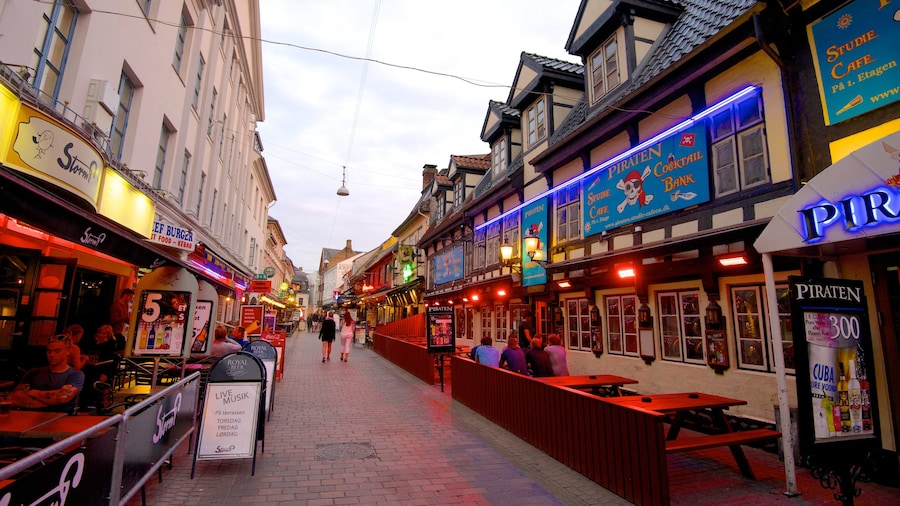In the 1950s archaeologists discovered a graveyard on a hill overlooking Aalborg. It is now Scandinavia’s largest and best-preserved Viking burial ground.
See Viking graves dating back to A.D. 400 and discover the remains of ancient settlements at the Lindholm Høje museum and burial site. During excavations between 1952 and 1958, archaeologists uncovered 682 graves previously preserved by 13 feet (4 metres) of sand. Today, it is the biggest cemetery of its kind in Scandinavia and shows how the Danish lived some 1600 years ago.
Visit the burial ground first. See how the graves have different shapes: Triangular structures are for males and oval structures for females. Go to the top of the hill to find the oldest graves, dating back to around A.D. 400. The newer graves, dating to A.D. 1000, are further down the hill.
Learn about the burial rituals from the Germanic Iron Age and Viking Age. Graves covered in grass mounds are from the Iron Age. The Viking graves typically include a circle of stones, once containing a fire for cremation.
See how the cremations took place in the Lindholm Høje museum. After a visit to the actual burial sites, the displays in the museum put it all in context. The excavations also unearthed other discoveries, so you can see coins, jewellery and glassware. Kids will enjoy the 3-D animation of a Viking ship sailing at sea and will find out a bit more about these fearless men. These early Danish people also herded cattle and wove fabric.
Lindholm Høje is situated on a hilltop in Nørresundby overlooking Aalborg and the Limfjorden. It is a 10-minute drive north from the city centre. Rent a car and park for free onsite or take a public bus towards Uttrup Nord. The museum’s entrance is a 10-minute walk from the bus stop nearest to Lindholm Høje.
Lindholm Høje is open daily from April to October, but closed on Mondays from November to March. Visit the official Lindholm Høje website for details of events and varying opening hours at Christmas.

















